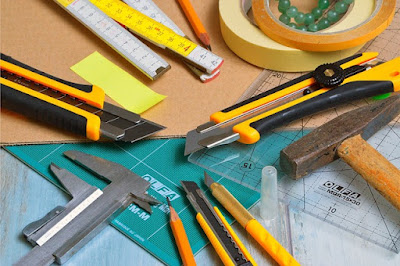Joinery Techniques 101 (Step-by-Step Guide + Free Smart Plans)
In this guide, we’ll cover everything you need to know about joinery—the types of joints, essential tools, beginner-friendly methods, advanced techniques, and modern joinery solutions like CNC machines. Whether you’re building furniture, cabinets, or decorative pieces, mastering joinery will take your woodworking to the next level.
Why Joinery Matters in Woodworking
Joinery isn’t just about holding wood together. The right joint can:
Provide Strength – Ensure stability and long-lasting builds
Add Aesthetic Appeal – Showcase craftsmanship with visible joints like dovetails
Increase Functionality – Create movable or flexible connections
Reduce Reliance on Hardware – Minimize nails, screws, or metal brackets
Essential Tools for Joinery
Before diving into techniques, equip your workshop with the right tools:
Hand Tools
Chisels – For carving and cleaning joints
Mallets & Hammers – Precision striking without damaging wood
Hand Saw / Dovetail Saw – For fine cuts
Marking Gauge & Square – Accuracy in layout
Power Tools
Router & Router Bits – For mortises, dados, and grooves
Table Saw with Dado Blade – For box joints and rabbets
Drill Press – For dowel joinery and precise holes
Specialty Tools
Dovetail Jig – Perfect dovetails, every time
Biscuit Joiner – Strong, hidden joints
Pocket Hole Jig (Kreg Jig) – Fast, beginner-friendly joinery
Types of Wood Joints (With Examples)
Joinery comes in many forms. Here are the most common joints every woodworker should know:
1. Butt Joint (Beginner)
Easiest joint—two boards butted together
Weak on its own, often reinforced with screws or glue
Great for quick projects
Beginner Wood Joints for Simple Projects
2. Lap Joint
Boards overlap for more surface area
Stronger than a butt joint
Common in frames and furniture
3. Dowel Joint
Uses wooden dowels for hidden reinforcement
Affordable and relatively easy
Perfect for cabinets and shelves
4. Mortise and Tenon (Intermediate)
Classic, strong joint for furniture making
Requires precision but lasts for generations
Mortise and Tenon Step-by-Step Guide
5. Dovetail Joint (Advanced)
Recognized for strength and beauty
Used in drawers, boxes, and fine furniture
Difficult by hand, easier with a dovetail jig
6. Box Joint / Finger Joint
Interlocking rectangular cuts
Great for boxes, drawers, and decorative work
7. Pocket Hole Joint
Quick and strong, using screws at an angle
Beginner-friendly and versatile
Beginner-Friendly Joinery Projects
If you’re new to joinery, start with these simple projects:
Picture Frames using lap joints
Bookshelves with dowel joints
Simple Tables with pocket hole joinery
Easy Woodworking Joinery Projects for Beginners
Advanced Joinery Techniques
For woodworkers ready to level up:
Hand-Cut Dovetails: The ultimate skill test in precision and patience
Hidden Mortise and Tenon: Adds strength without visible joints
Sliding Dovetails: Perfect for shelves and drawer construction
Japanese Joinery (Kigumi): Complex, nail-free joints with stunning beauty
Japanese Joinery Explained – Step by Step
Modern Joinery with CNC & Smart Tools
Technology has transformed joinery. With tools like the DIY Smart Saw (CNC machine), you can:
Automate complex joints with precision
Mass-produce furniture parts
Save time on repetitive cuts
DIY Smart Saw Plans – Precision Joinery Made Easy
Tips for Strong and Lasting Joints
Always dry-fit before gluing
Use quality clamps to hold joints tight while curing
Choose the right glue for indoor vs. outdoor projects
Sand joints carefully for smooth, flush finishes
Common Mistakes to Avoid in Joinery
Relying on butt joints for heavy loads
Over-gluing and creating weak bonds
Using dull chisels or blades
Ignoring wood grain direction in cuts
Common Joinery Mistakes and How to Fix Them
Recommended Resources for Joinery
Books: “The Complete Guide to Wood Joinery”
Courses: Online classes for dovetails, mortise and tenon, and Japanese joinery
Plans & PDFs: Downloadable joinery projects
Conclusion
Joinery is the art and science of woodworking. By mastering the different types of joints, equipping your workshop with the right tools, and practicing both beginner and advanced techniques, you’ll unlock the full potential of woodworking.
Whether you’re building a simple bookshelf, crafting heirloom-quality furniture, or experimenting with CNC precision joinery, this skill will elevate your projects from functional to exceptional.









.jpeg)
